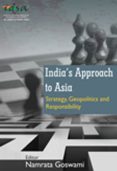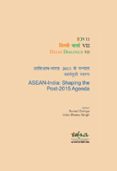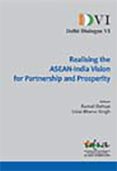India in Australia’s Strategic Framing in the Indo–Pacific
The world is witnessing a geopolitical shift from the North Atlantic to the Indo–Pacific region. US power is in relative decline with a steady build-up of Chinese power, wealth and influence. The last 15–20 years have also seen the rise of India. Against this backdrop, Australia’s reconceptualisation of its strategic frame as the Indo–Pacific widens its geopolitical canvas and elevates India’s importance for multiple Australian interests and objectives.
The Quest for Federalism in Myanmar
The question of autonomy or self-determination in Myanmar goes back to the country’s pre-independence era. It is an important historical issue which unified and divided the country. The idea of forming a union government that would grant equal status to all citizens brought together different ethnic groups at the Panglong conference in 1947. However, the country’s conflicts remain and efforts are on to address the decades-old problems. One possible solution widely discussed is federalism.
Security Challenges and the Management of the India–Myanmar Border
Being highly porous, poorly guarded and located along a remote, underdeveloped, insurgency-prone region and proximate to one of the world’s largest five opium producing areas, the India–Myanmar border is vulnerable to the activities of insurgents and drugs and arms traffickers as well as criminals. Although the Indian government has been alive to the threats that emanate from a poorly guarded India–Myanmar international border, its attention towards the problem has been woefully inadequate.
Significance of the November 2015 Myanmar Elections
Aung San Suu Kyi’s National League for Democracy (NLD) won by a landslide majority in the openly contested elections Myanmar held on Sunday, November 8, 2015.The NLD won a convincing majority with 255 seats in the lower house, 135 in the upper house and 496 seats in the state and regional legislatures. This paves the way for election of President of its choice and forming a government. The election had 33.5 million eligible voters (over 18 years) of Myanmar’s 52 million population.
Preventive Diplomacy and the Role of Civil Maritime Security Cooperation in Southeast Asia
Southeast Asia’s international shipping lanes (ISL) are essential to the economic security of the Asia-Pacific region. Maintaining good order at sea serves to protect regional trade and can be achieved through collaboration between civil maritime security agencies (coast guards). Japan and China both have significant coast guard capabilities and diplomatic influence in the region that could be harnessed to promote civil maritime security cooperation with the countries of the Association of Southeast Asian Nations (ASEAN).
Insurgency, Drugs and Small Arms in Myanmar
The many links between drugs, small arms and insurgency have been widely discussed and addressed by scholars. The literature in particular has convincingly shown how several insurgent groups in Myanmar have used the drug business to finance and sustain their violent movements. Funds generated from drug production and circulation help the insurgent groups to procure arms, and are widely believed to be supporting the protracted nature of these movements.










